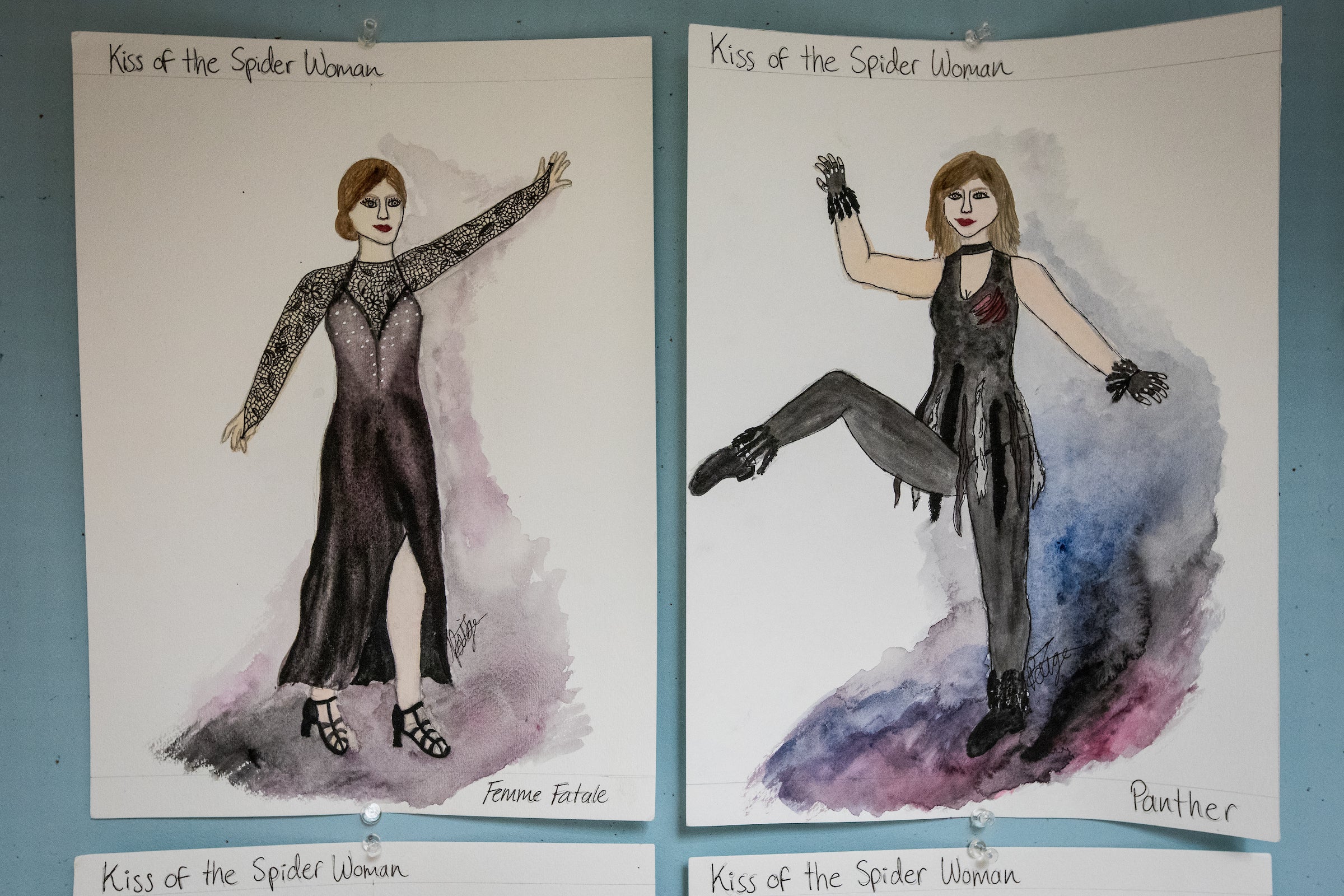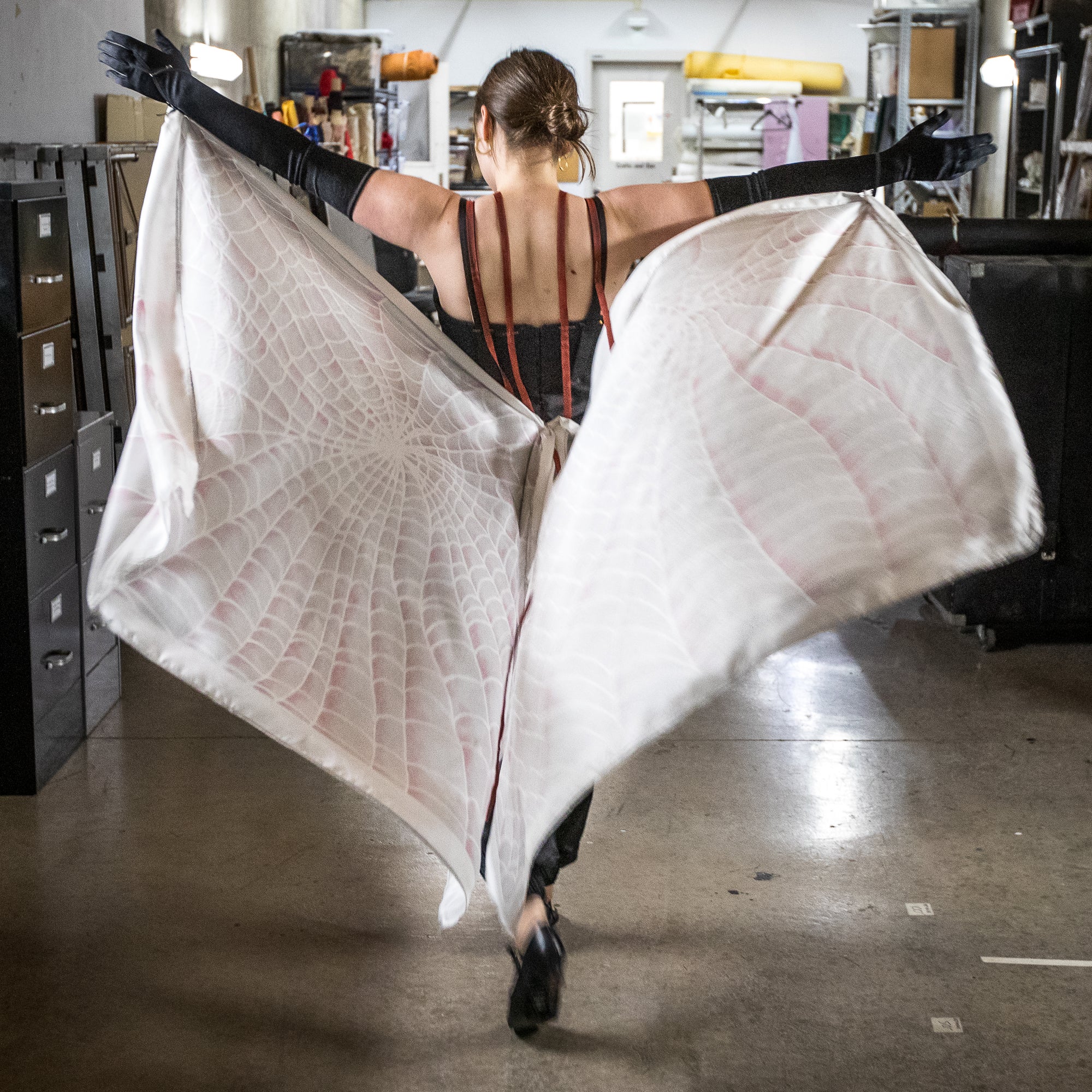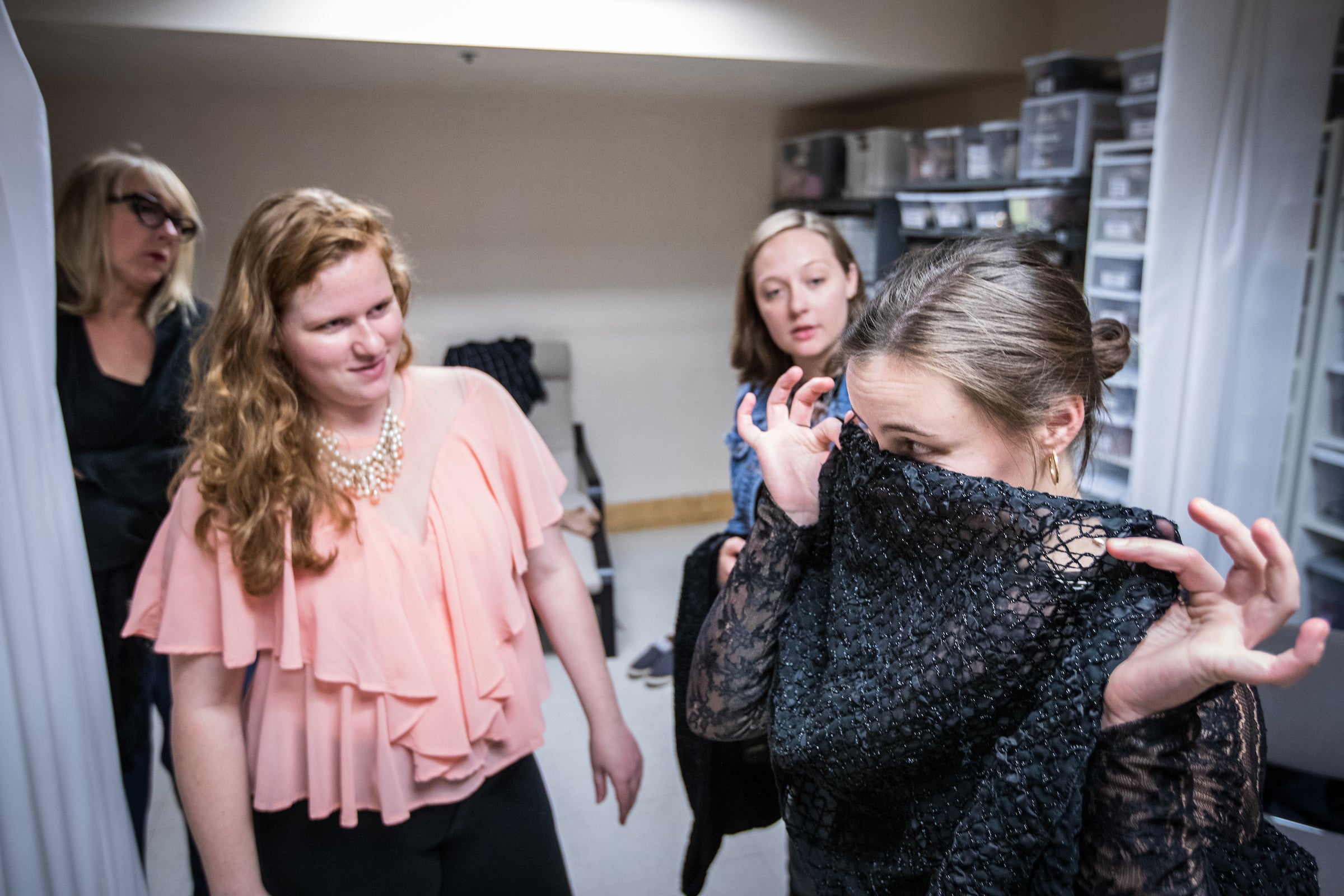ASU theater students tap into fantasy for 'Kiss of the Spider Woman' costumes

The “Kiss of the Spider Woman” is a play about politics and fantasy, and the Arizona State University student production that will debut on Friday allowed for a lot of creativity in the costuming.
The female dancers in the show are imaginary — conjured in the minds of the two male characters who are in prison.
The show, a production of the School of Film, Dance and Theatre in the Herberger Institute for Design and the Arts, will feature costumes designed by Paige Lockwood, a senior majoring in theater design and production, and created by Niamh Murphy, the draper for the show who also is a senior majoring in theater design and production.
The students started working with the director, Guillermo Reyes, professor of theater, back in the spring semester to create the otherworldly vision of the costumes, according to Sarah Moench, clinical assistant professor of costume technology.
“This show, with the theatricality of the dancers’ costumes in particular, is a great way to illustrate how we go about making costumes and to showcase what our students are doing,” she said.
“We get a lot of interest in this around Halloween.”
Here are some ways to come up with a costume like the pros:
Costume sketches were created by Paige Lockwood, the costume designer, who is a senior majoring in theater production and design with a minor in studio art. Photo by Charlie Leight/ASU Now
Start early
“Some people start planning their Halloween costume the day after Halloween for the next year,” Moench said. “For us, the theater production schedule starts 23 weeks out from the opening.”
For “Kiss of the Spider Woman,” students were cast in the roles and Lockwood’s costume research and preliminary sketches were done by the end of the spring semester. Her final designs were due shortly after fall semester started.
“About 13 weeks out is when I come to the first meeting and talk about the production side,” Moench said.
The silk shawl worn by Ausette Anderies in "Kiss of the Spider Woman" was hand painted with silk dye for a "spidery" effect. Photo by Charlie Leight/ASU Now
Do your research
Lockwood started the costume design process by collaborating with the director and then researching the era.
The play is set in a prison in 1970s Argentina, a politically turbulent time. The 1985 movie starred William Hurt, Raul Julia and Sonia Braga, although Lockwood did not see it.
“I try not to watch movie interpretations because I don’t want to be influenced by other designers’ choices,” she said.
In the play, the character Molina passes the time in prison by discussing a movie from the 1940s, so Lockwood took inspiration from that for the “femme fatale” character’s costume.
“I looked at images of 1940s noir films and those powerful female characters with the long silky black dresses that are slender and have movement and are sensual,” she said.
“I wanted to get that sleek look and I also got inspiration from Argentinian tango because that started in Buenos Aires in the 1940s. That’s why I have the slit up her leg.”
Lockwood emphasized the “femme fatale’s” arms with black lace to get that sensuality and darkness of the character.
She also created the “spider woman” character’s costume.
“For that, I had a lot of creative freedom because there isn’t really a time period or exact look, because she’s in his imagination and it’s surrealism.
“So I looked at surrealistic artwork from that time, I found paintings of women who looked dangerous and mysterious and I was inspired by that.”
Niamh Murphy, costumer draper for "Kiss of the Spider Woman," makes an adjustment on the "femme fatale" costume worn by junior Ausette Anderies at the Nelson Fine Arts Center costume shop. Photo by Charlie Leight/ASU Now
Consider professional touches
Murphy created the “femme fatale” costume out of silk charmeuse, which stretches, so it’s comfortable for the dancer.
But the fabric is expensive. So first, the drapers make the costume out of inexpensive fabric to perfect the fit and tweak the design. For example, the “femme fatale” costume was modified to have princess seaming in the bodice, which works better for a dancer.
“We did the mockup so that’s always comforting, and so you know how much fabric it will take and any roadblocks you might face,” said Murphy, who learned to sew in high school and refined her skills at ASU.
For the shawl that goes with the “Spider Woman” costume, Moench and Lockwood created the spidery effect by hand-painting the white silk with silk dye. Then, they sewed dress weights to the corners to enhance the graceful motion as the actor walked with the shawl flowing behind her. Do-it-yourselfers can add coins to a hem or edge to create the same finished effect.
Costume designer Paige Lockwood, left, watches as Ausette Anderies tries on the "femme fatale" costume for the "Kiss of the Spider Woman" production. Photo by Charlie Leight/ASU Now
Don’t forget “extras”
“People making their Halloween costume have a budget and we have one too,” Moench said.
The students had $750 to spend on all the costumes, including shoes, plus hair and makeup. Some of the items, such as the black lace for the “femme fatale” costume, were in the costume stock. The silk was expensive but actually cost less to buy in bulk, so there’s plenty left over for another costume in the future.
Moench’s tip for Halloween costumers:
“We always set aside 10% of that budget as a contingency, so if we find out we need another pair of shoes or we need to add a hat or some jewelry, there’s a little bit of money set aside,” she said.
“So figure out what kinds of pieces you need, set your budget and set 10% aside because inevitably, you’ll want something else at the end and you’ll end up at the store trying to find black fishnets and you’ll have to spend a bunch more because everybody has bought them all.”
Top image: Production crew members begin attaching the silk web to the "Spider Woman" costume, worn by actor/dancer Ausette Anderies, for the "Kiss of the Spider Woman" production at the Nelson Fine Arts Center costume shop. Photo by Charlie Leight/ASU Now
MORE HALLOWEEN TREATS
- Unmasked: A Look at Halloween's costuming history
- The business of Halloween
- Pop-up stores: Getting into the 'spirit' of Halloween
- How to enjoy Halloween treats responsibly
- Entomology: The real ghouls of nature
- Monster mash-up: English profs fave myths and legends
- Watch: 'Monstrum' host Emily Zarka talks monsters
More Arts, humanities and education

ASU professor's project helps students learn complex topics
One of Arizona State University’s top professors is using her signature research project to improve how college students learn science, technology, engineering, math and medicine.Micki Chi, who is a…

Award-winning playwright shares her scriptwriting process with ASU students
Actions speak louder than words. That’s why award-winning playwright Y York is workshopping her latest play, "Becoming Awesome," with actors at Arizona State University this week. “I want…

Exceeding great expectations in downtown Mesa
Anyone visiting downtown Mesa over the past couple of years has a lot to rave about: The bevy of restaurants, unique local shops, entertainment venues and inviting spaces that beg for attention from…





